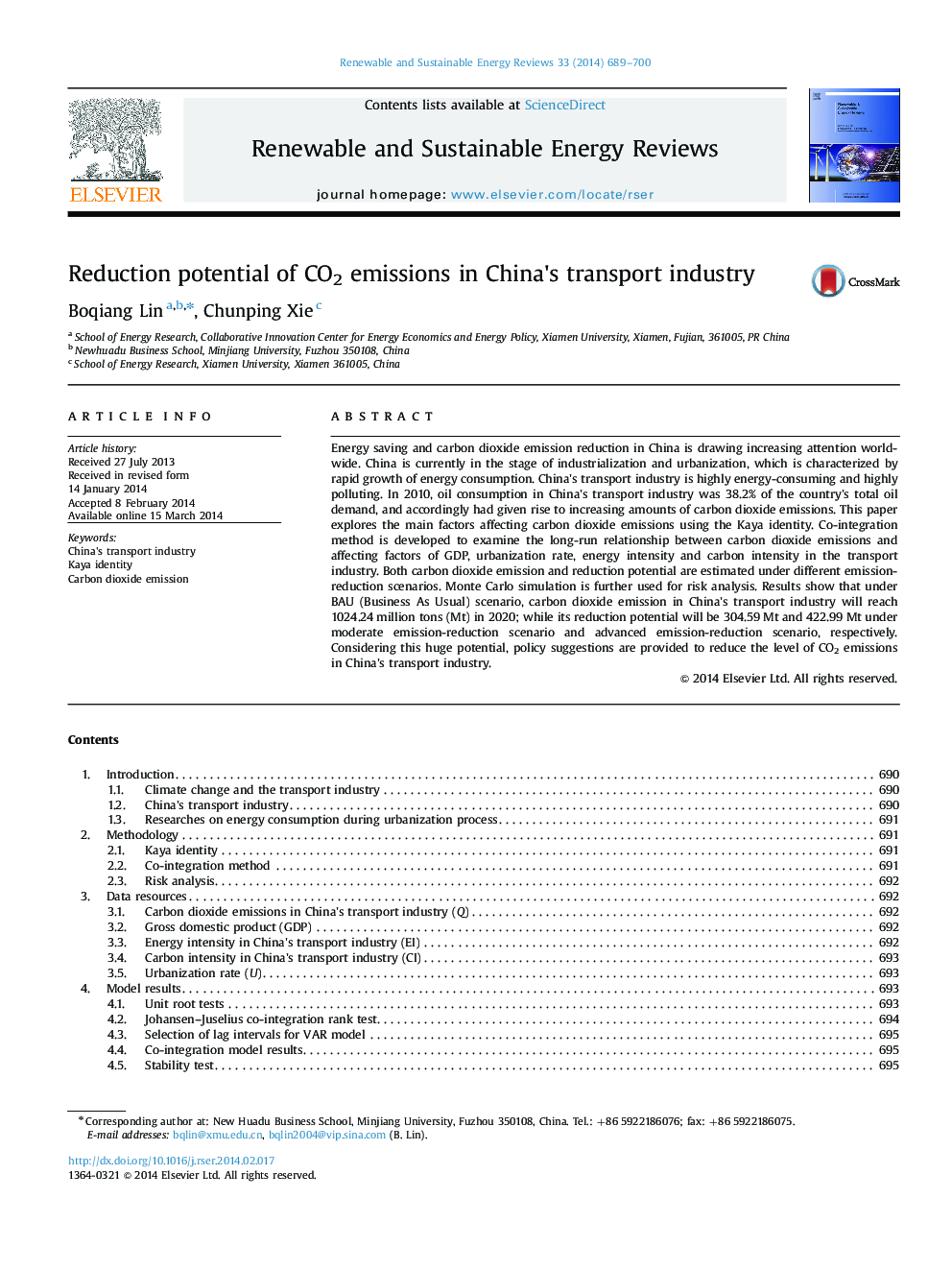| Article ID | Journal | Published Year | Pages | File Type |
|---|---|---|---|---|
| 1750313 | Renewable and Sustainable Energy Reviews | 2014 | 12 Pages |
Energy saving and carbon dioxide emission reduction in China is drawing increasing attention worldwide. China is currently in the stage of industrialization and urbanization, which is characterized by rapid growth of energy consumption. China׳s transport industry is highly energy-consuming and highly polluting. In 2010, oil consumption in China׳s transport industry was 38.2% of the country׳s total oil demand, and accordingly had given rise to increasing amounts of carbon dioxide emissions. This paper explores the main factors affecting carbon dioxide emissions using the Kaya identity. Co-integration method is developed to examine the long-run relationship between carbon dioxide emissions and affecting factors of GDP, urbanization rate, energy intensity and carbon intensity in the transport industry. Both carbon dioxide emission and reduction potential are estimated under different emission-reduction scenarios. Monte Carlo simulation is further used for risk analysis. Results show that under BAU (Business As Usual) scenario, carbon dioxide emission in China׳s transport industry will reach 1024.24 million tons (Mt) in 2020; while its reduction potential will be 304.59 Mt and 422.99 Mt under moderate emission-reduction scenario and advanced emission-reduction scenario, respectively. Considering this huge potential, policy suggestions are provided to reduce the level of CO2 emissions in China׳s transport industry.
